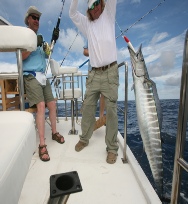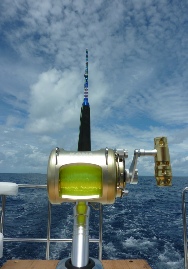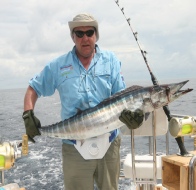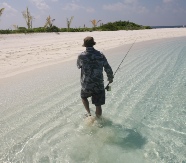© 2014 Gary Smith Fishing Ltd All Rights Reserved










Proudly Associated With


Over the past year I have repeatedly emphasised that distance casting is not everything when fishing the Mediterranean Sea from the shore. It is more a case of knowing where the fish are in relation to the shore and when they are likely to feed. You may be targeting a particular species. If so, do they feed in shoals or are they predators who lie in wait for there prey and will feed alone?
Many anglers, both novice and experienced, cast out some bait and expect to catch fish without giving some thought to the terrain they are fishing. This is not a criticism. I have done exactly the same. It is the natural thing to do as an angler keen to explore this vast expanse of water. The soul destroying part is after several hours not having any success what so ever. Mind games start and you will start questioning everything you are doing You will probably convince yourself that everything you are doing is wrong, when it may be only fine adjustments that prevent you from blanking.
Many anglers, both novice and experienced, cast out some bait and expect to catch fish without giving some thought to the terrain they are fishing. This is not a criticism. I have done exactly the same. It is the natural thing to do as an angler keen to explore this vast expanse of water. The soul destroying part is after several hours not having any success what so ever. Mind games start and you will start questioning everything you are doing You will probably convince yourself that everything you are doing is wrong, when it may be only fine adjustments that prevent you from blanking.
Let us presume for starters it is daylight, the weather is sunny, fine and very calm, so the Mediterranean is flat and lapping the shore, we are fishing a clean sandy sea bed ……perfect conditions to catch fish, you think, after maybe being used to fishing the heavy tidal seas surrounding the UK. Not at all, these are probably the most difficult conditions you could have here. Imagine the Mediterranean as a massive lake; think also about how many different forms of sea life exist in these clear waters and how vulnerable smaller fish are to predators. Clear water is the first thing to think about, the calmer the water the clearer it is. The fish you are trying to catch can see and sense everything you are throwing in to attract them to the hook. Firstly a fish has a 'window' or field of vision like an inverted cone of around 98 degrees. Secondly the lateral line which runs from just behind the head to the tail is the external part of a mucus filled canal beneath the skin filled with sensors that act like an echo sounder registering vibrations of very low frequency. This warns the fish of obstacles or enemies, especially useful when dark, but also when a large lump of lead, line and hooks crash through the surface in calm waters on a bright sunny day.
What is needed here is terminal tackle that will not spook fish; it has to land in the water however far we cast. That is fact. What we need to achieve in these conditions is presenting the bait as far away from the main line and weight as possible and as natural as possible. With the sun shining brightly on the surface of calm waters many fish will not be feeding so chances of catching are reduced again. We are then looking to catch only fish that are out from the shore that suddenly come across a food source unexpectedly, your bait, and take a chance as it is in front of their nose or predator fish such as Lubina patrolling the very near the edge of the shore line for small fish or other such food. I would suggest using a simple running leger. The hook length needs to be up to a metre long. This obviously would not be possible in any other conditions than flat calm as tangles would occur. Worm bait is the best bet as most fish will go for this. Bigger baits will maybe attract larger fish with bigger mouths but if you are wanting to catch fish regularly then a small hook with worm bait is best. No need at this distance for fancy line. Just keep everything as simple as possible. O.35 - 0.40 main line, a tube weight, size 8, 10 or 12 hook on a metre hook length loaded with a Coreano or Americana worm bait using a hollow baiting needle threaded over the hook and up the line so the worm covers the hook. This set up will act like a bolt rig used in freshwater fishing so fish that will pick up bait and move off immediately, dropping it if any resistance is felt, will be hooked easier using this method. Either cast this rig out to around thirty or forty metres or alternatively right on the shore line where the waves break on the drop off. This rig is not suitable for long casts as the hook length will tangle. Your bait is now on the sea bed away from the terminal rig and in the clear flat waters is best left for twenty to thirty minutes or so before retrieving and checking the bait. At night in these conditions a different technique would be used but we will cover that later. Basically keep everything as simple, light and quiet as possible then wait for the bite indication.
What is needed here is terminal tackle that will not spook fish; it has to land in the water however far we cast. That is fact. What we need to achieve in these conditions is presenting the bait as far away from the main line and weight as possible and as natural as possible. With the sun shining brightly on the surface of calm waters many fish will not be feeding so chances of catching are reduced again. We are then looking to catch only fish that are out from the shore that suddenly come across a food source unexpectedly, your bait, and take a chance as it is in front of their nose or predator fish such as Lubina patrolling the very near the edge of the shore line for small fish or other such food. I would suggest using a simple running leger. The hook length needs to be up to a metre long. This obviously would not be possible in any other conditions than flat calm as tangles would occur. Worm bait is the best bet as most fish will go for this. Bigger baits will maybe attract larger fish with bigger mouths but if you are wanting to catch fish regularly then a small hook with worm bait is best. No need at this distance for fancy line. Just keep everything as simple as possible. O.35 - 0.40 main line, a tube weight, size 8, 10 or 12 hook on a metre hook length loaded with a Coreano or Americana worm bait using a hollow baiting needle threaded over the hook and up the line so the worm covers the hook. This set up will act like a bolt rig used in freshwater fishing so fish that will pick up bait and move off immediately, dropping it if any resistance is felt, will be hooked easier using this method. Either cast this rig out to around thirty or forty metres or alternatively right on the shore line where the waves break on the drop off. This rig is not suitable for long casts as the hook length will tangle. Your bait is now on the sea bed away from the terminal rig and in the clear flat waters is best left for twenty to thirty minutes or so before retrieving and checking the bait. At night in these conditions a different technique would be used but we will cover that later. Basically keep everything as simple, light and quiet as possible then wait for the bite indication.
Copyright © Gary Smith & Luigi Mateos
Back
| Address |
| Contact Us |
